Forsite-2035: purposes, funds and results

The nearest plans are evident as they are included in the state programs and go under strict schedules. Talking about the distant future is the same as to writing a fantastic story. The reality of the medium-term forecast depends on the competence and responsibility of the person who does it. We asked well-known experts in their fields to make medium-term forecasts for the period up to 2035. We were interested in the goals that we should strive for, and also the resources and technologies that will be required to achieve them. And what will happen if the plans are implemented.
Earth, Moon and Mars
Fedor Yurchikhin, MAI graduate, RF space pilot, Hero of Russia, accomplished 5 space missions of the duration of 673 days and performed 9 spacewalks.
Recently Russia has been developing a lot of projects and programs for space activities. With the new leadership of the Russian space industry, constantly changing, a new program was designed. And now it would be re-elected. So, I’ll tell you what I’d rather see by 2030s in the terms of current realities and economy.
Firstly, it would be perfect if our national space program includes an automatic near-Earth high-latitude orbital station, periodically visited, with targeted replaceable modules. The orbit inclination – not less than 63°, which will help us involve Plesetsk Cosmodrome. We see only 7%, or maybe more, of our country fr om the orbit of the ISS (inclination 51.6°). The high-latitude would allow us to continue using the near-Earth orbit in the national interest, covering an incommensurably large territory of our country, including our North.
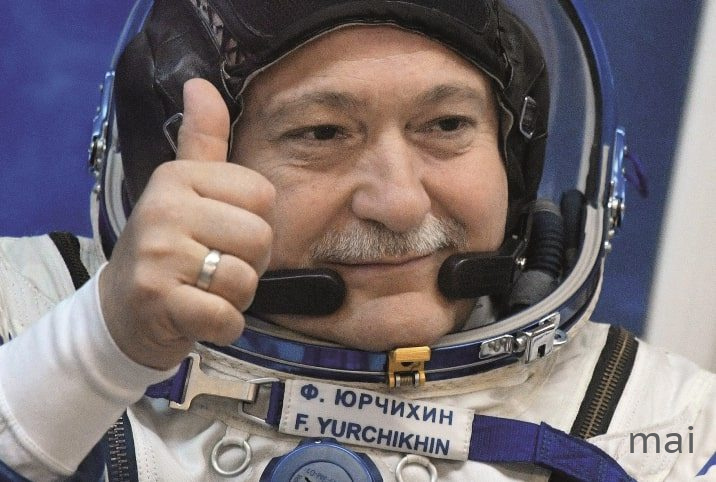
After all, the tasks that are being solved nowadays in a near-earth orbit have not been canceled. And many of them have not been solved yet. This includes space materials science, the production of medicines, the development of methods for growing plants and animals for future long expeditions beyond the circumterrestrial orbit. It can work out the issues of transferring energy fr om space to Earth. This would allow the power plants to be taken out of the atmosphere. Ecological problems! These and many other tasks are to be worked out in a near-earth orbit.
The younger generation will be 30-40 years old by the 2030s and that must be the most creative flourishing for the humanity. So, considering the second important direction is the exploration and development of the lunar surface, I hope that they will be working on the Russian lunar program. Quite possible that the Russian automatic stations would be finally launched to the Moon in the 2020s. And in the beginning of the 2030s the Russian astronaut would start to fly to the Moon. The moon should become a testing ground for technology development for more distant flights, for example to Mars. On the surface of the moon, you can practice the technology of landing on Mars, building residential modules.

The third major direction that is preferable for me by 2030s is the first steps of the Russian national program to prepare for landing a man on Mars. By this moment there would be only automatic devices which would provide connection, navigation and meteorology. We should work out the robotics systems on Mars. For instance, they would be automatic bulldozers, which clean the landing site for heavy modules and also provide outer markers during the next spacecrafts landings. Automated plants for extraction and storage of hydrogen, nitrogen and water.
The Mars’s mission profile would require new technologies. I think that this roundtrip should last not more than 6 months. Now, taking into account the waiting time for the optimal arrangement of the planets for the least energy-consuming trajectories, such an expedition will last 2 years. And this would require you to carry with you all the resources for these 2 years. And finally, asteroids, Jupiter, Saturn… Deep space where we haven’t been.
Space as a means, not an end
Yuriy Usachev, MAI graduate, RF astronaut-pilot, Hero of Russia, accomplished 4 space missions of the duration of 553 days and performed 7 spacewalks.
Those plans, which are only being developed, are formed by people very pragmatic and conservative. It seems to me that they are looking narrowly at the prospects of cosmonautics. If we recall the beginning of the space era, then the projects were implemented in incredible terms for the present time. In 1945, the Great Patriotic War ended, the country lay in ruins. And in just 12 years the country was rebuilt, new technologies were developed, which made it possible to launch the first satellite. Three and a half years after him, the first man flew into space.
Nowadays the velocity of development of new space aircrafts is very slow. Slowly planning of programs, their earthiness impedes thinking itself of the people busy in this field. Development of new programs lacks creative vision, a good dream. Back in 15 years ago what have we done during this time? We built the International Space Station. Of course, it is a good technical experience, experience of collaboration.
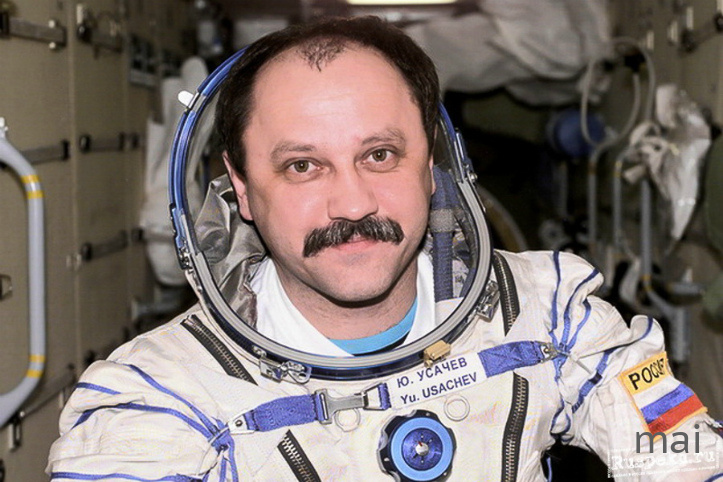
However, today practically the same mission profiles are repeating over and over. It is obviously the crisis. The whole space programs are in crisis. We don’t know what to do next. If we don’t change now, don’t take a different view, then in 15 years we will be in a worse situation. Again, if we don’t start changing we will be deteriorating. That is more a philosophical kind of problem. After all, we can do much more.
I hope that reality in 15-20 years will be different, more optimistic. First of all, for this we need to define a worthy goal. As soon as we put it for ourselves, we realize the tasks, there will be resources and technologies. Judging by what is being said at the highest level, there are already new technologies that would radically change cosmonautics, ensuring its development. Therefore, wh ere we will be technically 20 years from now, it is understandable. I think that the technologies that the President of Russia told the Federal Assembly will be actively used in cosmonautics. They will give a completely different level of energy. This will be nuclear energy. It will us allow to switch to new principles of flight in space, for example, on more powerful electric-reactive engines.
Of course, I’m sure the cosmonautics is only the instrument for something much more global. Furthermore, it is the key for the humanity developing. The main thing is to help reveal and be realized to the human. Then a new paradigm will be opened for the whole world. So, we will understand what to do next with the space. I think the Solar System was being left behind. To step to the Moon again and to land on the Mars are not for the humanity anymore. Man, by nature, can do much more. He needs absolutely different distances and speeds.
Human brains are irreplaceable
Sergey Zheltov, CEO of the State Scientific Research Institute of Aviation Systems (GosNIIAS), academician of the Russian Academy of Sciences, RF honored worker of science.
The question of principle is no longer a very distant prospect, for example, in civil aviation: will a conventional aircraft be unmanned or not? This question has several aspects like if we talk about flying without a human pilot then it is fundamentally an unmanned aircraft. Now pilot is necessary for making decisions in emergencies, so their participation would be less with time. Automatics and artificial intelligence technologies will control the flight. However, to fully replace the pilot would be incorrectly as human brains are irreplaceable.
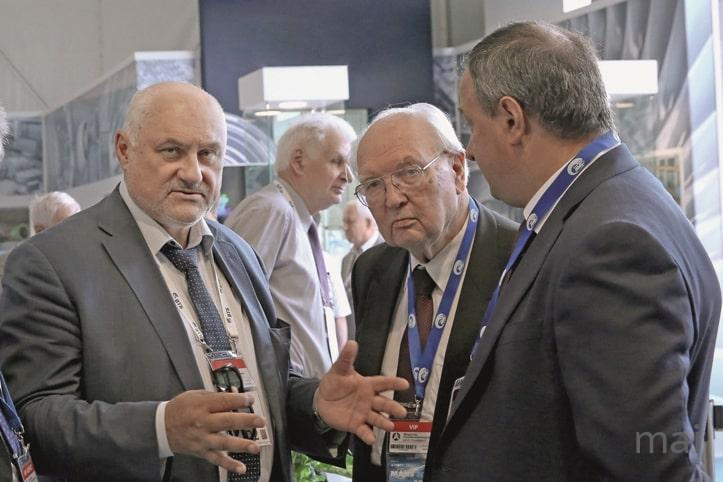
Another problem we should solve is the constant increasing flow of information from the sensors which is necessary to be handled on board. The software should become more and more intelligent, implying an increase in the number and complexity of the functions performed by the computer systems of the aircraft. It is intellectualization that will be the main vector of development of aviation systems in the foreseeable future. It will manifest itself in dozens of specific functions: navigation, equipment management, bypassing unfavorable for the flight zones and many others.
Increasing situational awareness is an important direction. The pilot needs to create the most obvious image of the position of the aircraft relative to everything that can be: the earth's surface, clouds, adverse zones, other aircraft and aircraft. This is especially important at night, in clouds, in fog or under other poor visibility conditions. If there is no data from the sensors, you can extract a matrix of heights, map information from the computer and very clearly depict the position of the aircraft relative to the surface, visualize potential hazards. This way of positioning is called a synthesized vision. It is necessary to sort the data, determine the degree of its importance for display. If all the data is provided to the pilot, then he will simply become entangled in them. It is required to solve the problem of optimizing their output: to show little, but the most important and to develop a flexible, convenient human-machine interface.
As the next trend in the development of airborne systems, it is possible to assess the state of readiness of the equipment-to ensure its self-diagnostics and the accuracy of the representation of the state of operability for the task in hand. Ideally, the aircraft in the near future should become like a person who rises in the morning and assesses his condition. Also, the aircraft must self-diagnose before each flight. To do this, it is necessary to increase the number of sensors that diagnose engines, avionics, chassis, elements of the fuselage and wings. We need sensors that control the health of the pilots, their psychophysical state. After all, most aviation accidents are happening today because of the human factor.
Besides board functions are getting more intellectual the piloting conditions are dramatically altered. To me more accurate these conditions growth of the level of flights, several dozen seconds interval between take-offs and landings, aviation traffic jams. They lead to a new level of interaction of air traffic control system. This modern airplane is getting associated as an element of computer network. The task of organization of network structures such as “air-to-air”, that is, the establishment of the aviation Internet, comes to the fore. Now the pilot interacts only with the dispatcher on the voice channel, which should be fully trusted, and the sky is filled with more and more. There is a huge number of drones, and there is a need to organize the interaction of all devices in the air among themselves, that is, to create new communication channels and an automated air traffic control system. It is necessary to solve tasks of modulating and optimization of traffic flows which are their turn in the coming years.
Drones-like: trucks, taxis and “accurate farmers”
Sergey Zhukov, president of Aeronet Association of Operators and Developers of Unmanned Aerial Systems.
Talking about civilian drone’s in Russia then their application is concentrated mainly in the field of remote sensing of the Earth and monitoring, they account for 75-80% of the market (this is 7.5-8 billion rubles). The remaining 20-25% relate to the development, production and sale of unmanned vehicles, their components and software. In Russia, a small share is accounted for by agriculture. In the world, the agricultural segment occupies about 15% of the total market volume of civil unmanned aerial systems, products and services based on them.
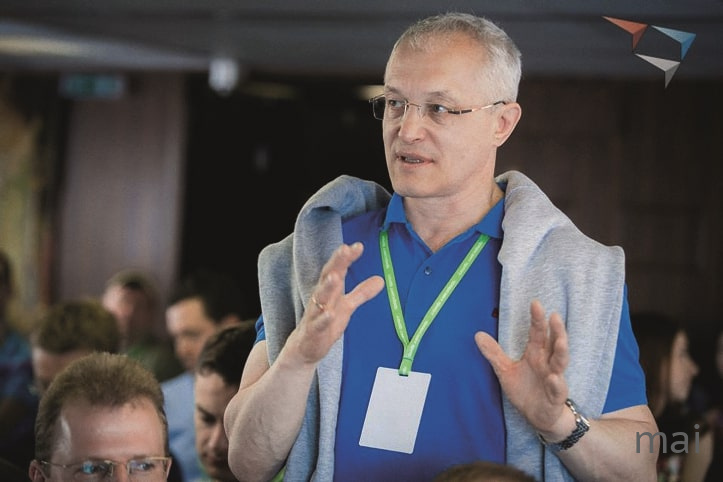
If you look at the prospect of 10-20 years, then most likely, about half of the market will be freight. They will grow dramatically in numerical terms. And it will be cargo transportation in different segments, starting from the express delivery of parcels with a mass of 0.3-10 kg and to delivering multi-ton cargoes, which will require the creation of a family of specialized unmanned aircraft aviation systems. Apparently, the very face of these cargo movements will change; long-haul routes will appear between the hubs with the corresponding heavy aircraft, inside there will be regional hubs and some kind of network delivery up to the “last mile”.
I guess at the same time passenger transportation using unmanned vehicles will be very significant. It will be a different taxi plan, as well as personal transport with a much simpler management system that does not require obtaining a pilot license. For landings and take-offs, roofs of buildings can be used. These systems should be with ultra short or vertical take-offs and landings.
Design modularity may occur in future which provide multisystem vehicles appearance, for example, an automobile could became airborne, fly, then fold its wings, land on a railway or subway platform and then go anywhere by an express route. Personalized or boutique manufacturing is likely to become a trend. Using modules, cross-cutting technologies, topological optimization it would be possible to design great variety of aircrafts for specific customers.
Remote sensing of the Earth and monitoring will most likely further narrowly specialize. Already, a number of Russian companies specialize in the construction and surveyor segment, open mining developments, monitoring of long objects. Some are engaged in cartography.
First of all, the use of drones in agriculture is accurate farming. You can see how your plants grow, or determine wh ere the pests have appeared. Such information, tied to precise coordinates, will need to be loaded quickly into the attachments of a flying crop-duster or tractor in order to respond quickly to this threat. Thus, “drones-like” will no longer be purely aviation. It will be a new branch at the interface between aviation, space technologies, information technologies and robotics. The major fact that hinders the development of industry and the realization of our engineering talents, especially young people, is the normative aspects and the overall socio-technological structure in our country. In the regulatory area, already today the pressure of business forces legislators to reconsider issues of secrecy and declassification in the part of remote sensing of the Earth. For example, a farmer needs to receive information day in and day out, and today two weeks are given for its declassification. In the field of air traffic management technologies, a transition from a permissive one to a notification procedure is required. An automated air traffic control and control system should be created, not tied to the dispatcher. Drones should be equipped with automatic-type “feel – avoided” systems. The same systems should stand on manned aircraft, which do not see drones today.
To live off another is unacceptable
Vladimir Mikhailov, Hero of Russia, general of the army, Russian Air Forces Commander in 2002-2007.
Passing through the heavy for the domestic combat aviation of the 1990s and 2000s, we need to draw the right conclusions. I am confident that Russia will continue its own aviation production. I do not mind importing, but I believe that living on someone else's baggage is unacceptable. In the military field, we must do everything ourselves. Our aviation in Soviet times corresponded to the status of the country as a great aviation power.
Among aircraft of the front-line aircraft will remain in demand for super maneuverability. At one time, this was done to carry out the maneuver of evasion of the missile fired over the aircraft. Today, missiles have also become trickier; they just will be uneasy avoided from them. However, super-maneuverability gives an additional advantage to a fighter in the conduct of conventional air combat.
In the next 20 years, military unmanned aircraft will actively develop in Russia. At one time we were leaders in drones, now we are reviving this competence. Unmanned drone will undoubtedly contribute to the growth of the combat power of the Air Force. But unmanned aircraft still can’t replace all types of conventional aircraft, but it is simply not required. You can make an unmanned frontline fighter today. But its cost will be incomparably greater than that of a conventional aircraft, for example, the Su-57. Even the US, which has a huge military budget, does not consider in the near future the possibility of mass production of unmanned frontline fighters. Therefore, in the next 15-20 years, the role of drones will be mainly to ensure the actions of combat manned aircraft, as well as to strike at enemy targets in a relatively uncomplicated situation.
In the coming decades, it is necessary to pull up long-range aviation to the proper level. The old aircraft of this class, whose flying resource is far from complete, will remain in the ranks for a long time. By themselves, their glider meets all modern requirements and will meet them in 15-20 years. It will only require modernization which means the replacement of old electronic equipment with a new one. It will allow early detection of all potential threats, as well as ensure the use of new types of weapons. Weapon systems for aviation, currently experiencing a real boom, will develop in the near future at the same rapid pace.
Today supersonic strategic bombers Tu-160 are manufactured in Russia. Earlier there was an opinion that a car of this class should quickly fly to the enemy's territory to inflict a crushing blow. But missiles fly faster. Samples of hypersonic weapons have already been demonstrated. Therefore, the Russian long-range aviation complex will be subsonic. Due to this, it will become much cheaper in development and production, more economical in operation.
In the next decade, we need to make very great efforts to produce small and training aviation. And we should pay serious attention to military transport aircraft. Russia will have to independently close the niches of light and medium military transport aircraft.
Flying wing and grown constructions
Sergey Chernyshev, CEO of TsAGI (the Central Aerohydrodynamic Institute), Academician of RAS.
Creation of aircraft is a multidisciplinary task affecting many areas of aircraft construction: a glider and its construction, engines, materials, avionics and other aviation equipment. In the next 15-20 years, the changes are likely to affect all these areas.
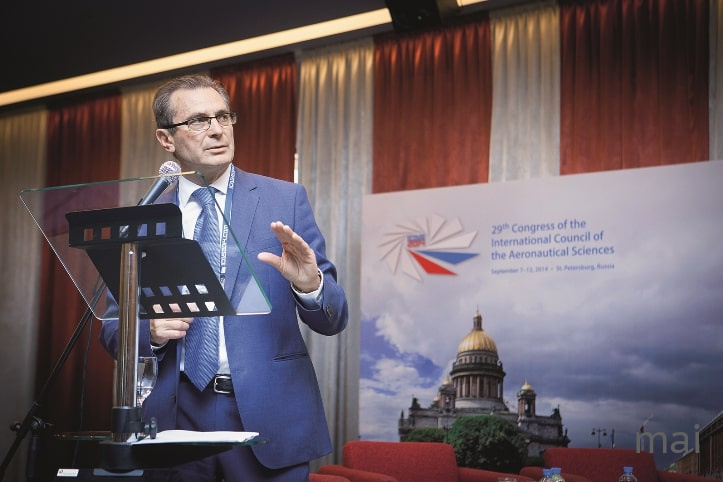
Line-haul airplanes should significantly change in the near future. The layout of the "pipe with the wing" with the engines hanging on it has almost outlived itself. More of it squeeze to improve the characteristics of the aircraft is unlikely to succeed. The only remaining almost untouched reserve of improvement is a decrease in the integral frictional force. Friction in turbulent flow is 5-6 times higher than in laminar flow. Therefore, it is necessary to create such forms of the aircraft, so that the flow is laminar.
Another significant reserve for improving the aerodynamic efficiency of the aircraft is the use of new variants of its layout. We are proud that TsAGI proposed a layout for the first time 35-40 years ago, which was later called in the Boeing company a blended wing body - a mixed arrangement of "wing-fuselage". We call it simply a "flying wing". This layout allows approximately a quarter to improve the aerodynamic quality of the aircraft.
Trends in the development of engines include an increase in the degree of limbation, the compressor pressure ratio and the efficiency of the units, which reduces the specific fuel consumption by 10-12%. In addition, the use of new materials and an increase in temperature ahead of the engine turbine also leads to an increase in its fuel efficiency. Similar solutions already apply. The prospect of a more distant one is the creation of a birotating propfan, or an engine with an open rotor. For a distant perspective the concept of engines with separated circuits is also considered. It allows more options for embedding engines in an airframe, for example, in the inboard wing panel. This concept is particularly advantageous for an aircraft in the “flying wing” scheme.
In the materials sciences, now there is a massive thought-out transition from metal to composites. According to forecasts of many scientists, technologists, designers, there will be a fourth stage when the degree of integration of metals and composites in the construction will be so high that it will be impossible to say exactly what the aircraft is made of metal or composites. It will be something grown specifically for a specific task and for specific loads.